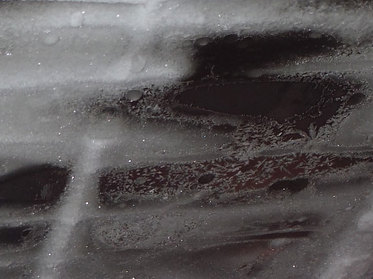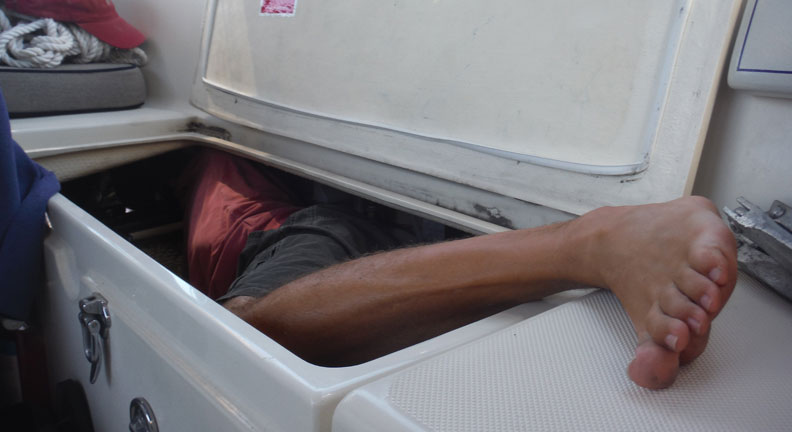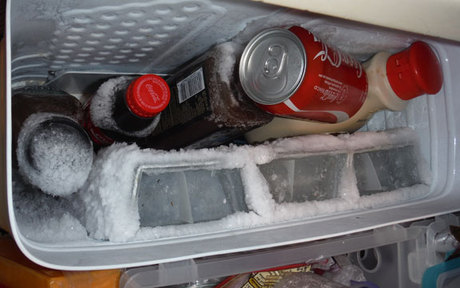Easy? Yes and no. Let’s just say… with boat projects… our motto is: “There’s always somethin’”. Despite my MacGyver husband’s uncanny aptitude with all things mechanical (and all things boat, really)… and despite the fact that he compulsively over-researches, over-engineers and over-anticipates (these are good “overs”)…still… there’s always somethin’. Usually it’s multiple somethin’s. Something that stymies, or delays, or doesn’t work right, or you forgot, or you broke, or you assume, or whatever...
SO instead of giving you a boring play-by-play of the install, I’ll describe some Boat Project Rules, just so you get a better sense of what it’s like to be aboard our boat during a major project.
Boat Project Rule #1: Finish secondary project before primary project.
Invariably, when you fix or replace something on a boat, a secondary project (often completely unrelated) must be finished before you can get started on your main project. If not, said secondary item WILL inevitably break, causing you to remove/redo the primary. Just get it over with the first time around.
In this case, the engine exhaust hose snakes into Indigo’s cockpit locker, inaccessible behind the fridge compressor. It is cracked; we can’t tell whether it will split any second or if it will last another 5 years. But it looks bad and it’s 20 years old; so we replaced it. If we put the new compressor in without replacing that hose, it will definitely split. That’s how boats work. Anticipating this, we brought down a new length of hose. It took an extra day to remove the old and replace; but it’s done, ready for another 20 years of coughing up engine spittle.
Boat Project Rule #2: Never put away anything during a project.
Brian drills a hole.
Brian: “Can you get me the vacuum?”
I get it out from its spot jammed under my clothes closet.
We vacuum up the sawdust or fiberglass, etc.
Me: “Are you done? I’m going to put it away ok?”
Brian: Mumble, mumble.
5 minutes later.
Brian: “I need the vacuum.”
Me: Sigh. “I just told you I was going to put it away.”
Brian: “Why would you do THAT?”
Me: “You’re right. WHY on earth would I do that?” I should know better by now.
I get the vacuum out and don’t put it away for 3 days. I use it as a back rest.
At some point you just give up trying to put anything away. We make a mess of the boat…complete and total disarray. Why not, it’s going to end up that way eventually anyway. Don’t fight it.
Our boat during the fridge project:
Everything from inside the cockpit locker is piled up outside in all directions. The only seat I can find in the cockpit is enough for one butt-cheek. Down below, I get to sit on a half-seat with my back embedded on the vacuum and legs atop a bag of dirty clothes and all the containers removed from the cupboard. The stove/fridge area is off limits since it is obviously the main area of work = no cooking for me. Bins of screws and electrical equipment and boxed refrigerator parts line Brian’s settee. So he gets to sit on the floor surrounded by bags of tools. Our v-berth bed is filled to the brim with cushions and sails. In other words, it’s virtually unlivable. I can take this for no more than about 3 days. Good thing this project took… 3 days.
Boat Project Rule #3: Boats require a little blood & sweat sacrifice (in this case, mucho sweat).
Brian has found that to complete a boat project successfully, a blood sacrifice to the boat is required, similar to ancient civilizations’ propensity for throwing virgins into a volcano to ensure a bountiful harvest. No he doesn’t sacrifice a virgin or cut himself on purpose, but unavoidably, Indigo will draw blood at some point during any given project.
The Hole
(Scene Fade-In) Brian is in the “hole” in the cockpit locker working on installing the new fridge compressor. In 100-degree heat. He has to fold himself down in there like a soft taco. It’s stifling. Immediately, he is dripping pools of sweat. I sit above, half-cheeked on the seat, waiting for instructions. We literally have to put a fan on the battery box behind him, or I hold it manually above him, depending on his position, just to keep him from getting overheated. What follows is not the ramblings of a mad-man, but actually a carefully considered mantra, that dates back since man started building watercraft.
Pant, pant, sigh, grunt…. “Damn it…” Asks for 2 screws. I hand them over. Pant. Bang. “NO!” (dropped screw). “Son of a…” Rummages around. Asks for the red-handled crimper in the electrical bag. I find it, not noticing there are three red-handled tools ‘til it’s too late. “No, the red-handled CRIMPER”. (I’d be a bad surgical tech.)
More panting, clattering, and pounding. “Ziptie.” Silence. LOUD grunt. “Arrggggh…. What the…..” Slices his finger on a screw tip and starts bleeding. “Ow!!!” “Sh#@.” (Blood sacrifice complete.) “You want a band-aid?” Of course not. Asks for another tool. I’m too slow, can’t find it. “Hurry.” Like he’s going to die if I don’t find it in the next 2 seconds. But then again…
It’s impossible to be in the “hole” for more than about 30 minutes in this kind of humidity. It’s just too physically and mentally draining. I once had to yell at him to get out and take a break. He tries to stand up, unfolding his shaking, bad knees out from underneath. “Ow… Ow... Owwwwww.” His entire shirt soaked, Brian slowly climbs out and goes down inside the boat…into sweet air conditioning. Ahhhh. Drinks an entire bottle of Gatorade in one minute. We sit inside for a ½ hour to cool down. Then… back outside. Back to the hole.
Three full days of this misery… The fridge compressor is in that hole, along with half the wiring and copper coil and air vent and the exhaust hose. I suppose a secondary benefit (if you were trying to be upbeat about the whole thing) is that the sauna effect is a great weight-loss technique. Hey, maybe we should charge admission! Boat Sauna: 100 pesos for 15 minutes! Guaranteed to lose those extra 5 pounds!
Boat Project Rule #4: Love Hurts
Your love for your boat and desire to make her prettier, more functional and, more importantly, use less amps… will put you in multiple and painful compromising positions. Get used to it. What follows may sound like porn to the uneducated…cover your ears.
The One-Armed-Tied-Behind-My-Back Position
Brian, laying on his back on top of the stove cover, butt hanging half off, one foot holding himself on the companionway step, wedges his entire head and only one shoulder and arm inside the dinky cupboard. And just so we’re clear HOW dinky… this is an opening of 12” x 9”. About the size of a piece of paper. Yeah.
“Owwww…. Ow, ow, ow, ow. Sh#tballs. F$$$, I can’t see a thing. I hate it when I only have one arm to work with.” At least you are in the air conditioning. Doesn’t that make it better? I don’t actually say this out loud. I know better.
A portion of the copper coil and electrical wiring leads from the compressor in the cockpit locker into the boat via this cupboard and then down into the fridge. Threading all that tubing and wiring through this tiny space is tricky. It’s a lousy place to do business.
So after 3 days, and knowing he had extracted himself for the 50th and “last” time from the bowels of the cupboard that was never meant to house a 1/4 of a person, breathing hard, half joking, mostly not: “I don’t like that position. I don’t want to do that anymore. Please don’t make me.” OK honey, I won’t… unless the fridge doesn’t work right, of course. Well, let’s just say he had to go back in a few more times.
A note: I can joke about these things… because Brian made me get in the “hole” too. I had to pull the stubborn, copper wire tubing into the locker through the hole that leads to the inside cupboard where Brian was pushing. He was in the air conditioning. I was in the 100 degree heat, kneeling in our cockpit locker sauna. I couldn’t get any leverage. I had to bend and pull yet not break the thin tubing or we’d be toast. It was unwieldly. It kept getting stuck. My arm is in a position it’s not meant to be. Pant. Grunt. Arrrggh. Oooow. My shoulder feels like it’s going to come out of its socket. I can use only one arm to pull, I can’t get enough purchase. My hands are sweaty and the copper slips right through them. In 10 minutes I am dripping like I’d just run 5 miles. Sh!#. I’m wilting! Finally I figured out how to bend it in the right spot and pull, bend and pull. Climbing out of the hole I say… “Oh my God, I hate that position. Don’t make me do that again.”
I’m not making this up folks. These are actual statements. Any random vacationer walking the docks hearing those utterings would be traumatized. Any boat owner would just nod their head and say “Amen”.
Boat Project Rule #5: That ONE part you didn’t buy an extra of…the one you SWEAR up and down you already had on the boat… will mysteriously disappear in time of need.
Brian thought we had a specific fuse holder already on the boat, so he didn’t order one. When we started the install, he tore the boat apart and couldn’t find the darn thing. More expletives. It’s always somethin’.
Star Marine is the local (and only) marine store. They mostly carry fishing gear and cosmetic supplies for fiber-glassing, cleaning and painting. Not famous for their electronics supply, we walked over there, dejected, just KNOWING they would not have what we needed, already contemplating our next move.
Worst case scenario: In order to get this project done ASAP, we might have to drive to the nearest West Marine in Phoenix, 9 hours away, stay overnight and bring it back down. Holy. Crap. Grumbling ensues.
But…tadaaaaa… the stars magically aligned. The ONLY fuse holder available was the particular one we required. Thank Boreas. (FYI: Boreas was the Greek god of the north wind and bringer of cold winter air.) Our lack of foresight cost us though: It was a whopping 690 pesos, or $45 for a typical $15 item. 300% markup. YIKES. And you think West Marine is expensive. Guess what? We GLADLY paid it. OK, not gladly.
Now that we have the elusive fuse holder, Brian finishes wiring. Let’s start that puppy up!
Crickets…
Well? Success! Right?! I mean, it works… right? After three days of toil in unbearable heat, it should just WORK. Right??!!!. Well, sort of. The compressor is running. That’s a plus. It didn’t blow up when we turned it on. The cold plate IS getting cool. BUT…
Boat Project Rule #6: Nothing ever works the first time around.
Wait, you don’t really think it’s going to work right off the bat do you? Pishaw! You must work for it; you have some more hoop-jumping Mister.
We had turned the fridge on around noon. 5 hours later, it was still only down to 60 degrees. Ruh roh. Our 20-yr old Alder-Barbour fridge chilled to 34 degrees in about that same amount of time. What gives? Yes, it’s super-hot outside, but that should be partially offset by our new, super-efficient compressor, plus air-conditioned cabin air is now being ducted directly onto the compressor (so it doesn’t need to work as hard in the heat). So we let it run overnight to see what happens.
The following morning it was cooler, but only down to 40 degrees. The compressor has a low, middle and high setting: it was set to high, yet still running constantly to keep up. That’s not normal. In fact, that’s really bad. It should turn on and off as needed to retain temp, using about 6 amps per hour, but really being “on” for about 25 minutes of every hour, therefore using up 5 amps per hour on average. At this rate, we have a huge problem: if it continues to runs non-stop….at 6 amps per hour for 24 hours, that’s over 140 amps…our solar panels won’t keep up. It’s always somethin’. Disappointment is creeping in.
We didn’t want to think about this - so we didn’t. After ALL that work, the thought of having to find someone to come out and trouble-shoot was incomprehensible. We might have to wait ‘til we got to La Paz or even Mazatlan where we know there are reputable refrigeration experts. What? No cheese ‘til December? Inconceivable.
Sea Frost and AutoZone to the Rescue
Brian called Sea Frost tech support as soon as he determined that fiddling with temp controls wasn’t helping. He had concluded there wasn’t enough refrigerant; SeaFrost concurred. Thankfully, they informed Brian how to fix it without consulting a costly refrigeration contractor. Time for a trip to Autozone. After purchasing and injecting special refrigerant, we waited a few hours. It got down to 38. Still running constantly. Ice trays are only partially frozen. The next day he added more. It got down to 36. Progress. Not running constantly…
The Adjustment Period
It took over another week of this: tweaking the temperature settings juuust enough, and monitoring the system overnight. Lots of thermometer-checking, brow-furrowing, “humph’s” , tongue-clicking, dial-twisting… and waiting. How touchy can this be?! Seriously. I took the chance and bought a pack of salchichas and 2 packets of cheese, imbuing positive vibes.
This “adjustment period” dragged out so long there was never an “Ah-Ha” moment. Not a single “Hey, it WORKS!”. No high fives, no happy-dance. How terribly anti-climactic for all that anticipation!
Bottom line is…while we continue to monitor its progress, Brian IS happy with the product. It is NOT running constantly, seems to be consuming about 40 amps overnight and is relatively steady at 34-36 degrees, even in this heat. I will let him write a detailed, technical explanation of the process later: The Good, the Bad and the Ugly. The good news? I finally get to go grocery shopping again - cheese aisle, here I come. But first, I’m going to get me a cold beer.




 RSS Feed
RSS Feed
